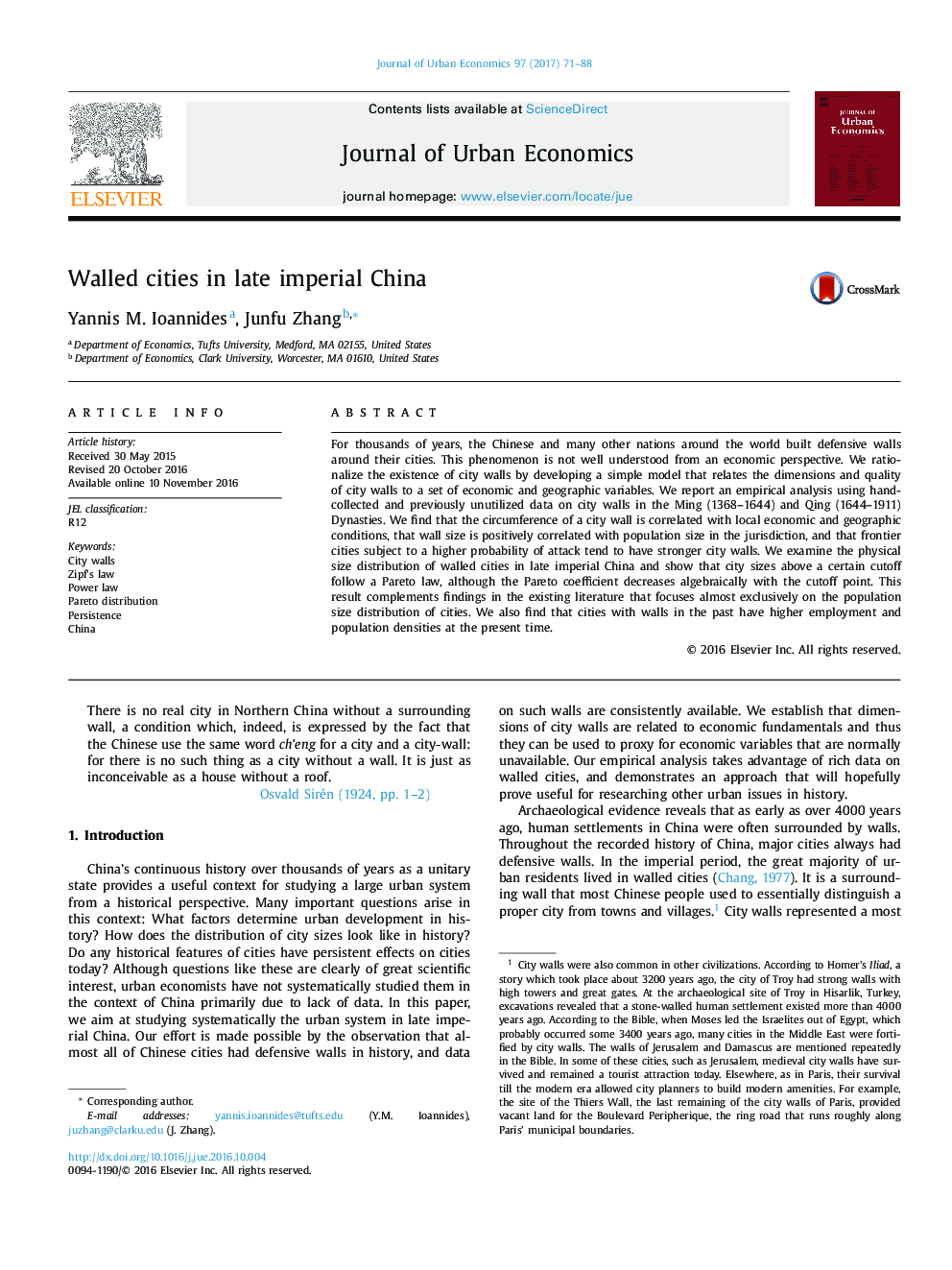| Article ID | Journal | Published Year | Pages | File Type |
|---|---|---|---|---|
| 5101943 | Journal of Urban Economics | 2017 | 18 Pages |
Abstract
For thousands of years, the Chinese and many other nations around the world built defensive walls around their cities. This phenomenon is not well understood from an economic perspective. We rationalize the existence of city walls by developing a simple model that relates the dimensions and quality of city walls to a set of economic and geographic variables. We report an empirical analysis using hand-collected and previously unutilized data on city walls in the Ming (1368-1644) and Qing (1644-1911) Dynasties. We find that the circumference of a city wall is correlated with local economic and geographic conditions, that wall size is positively correlated with population size in the jurisdiction, and that frontier cities subject to a higher probability of attack tend to have stronger city walls. We examine the physical size distribution of walled cities in late imperial China and show that city sizes above a certain cutoff follow a Pareto law, although the Pareto coefficient decreases algebraically with the cutoff point. This result complements findings in the existing literature that focuses almost exclusively on the population size distribution of cities. We also find that cities with walls in the past have higher employment and population densities at the present time.
Related Topics
Social Sciences and Humanities
Economics, Econometrics and Finance
Economics and Econometrics
Authors
Yannis M. Ioannides, Junfu Zhang,
